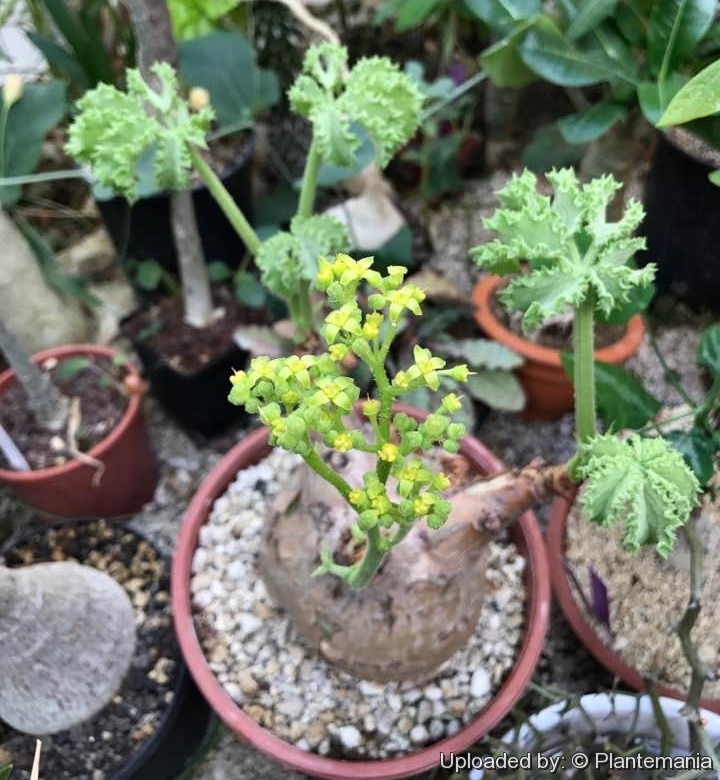Accepted Scientific Name: Cyphostemma uter (Exell & Mendonça) Desc.
Naturalia Monspel., Sér. Bot. 18: 229 1967

Cissus uter (Cyphostemma uter) Photo by: © Plantemania
Origin and Habitat: Northwestern corner of Namibia and in Angola in the vicinity of Mossamedes
Habitat: Grows in hot and dry, stony, mostly east-facing slopes almost hidden among the grass.
Altitude: 100-450 m
Synonyms:
Common Names include:
ENGLISH: South West African Grapes, Butter Tree
PORTUGUESE (Português): Odre do Deserto
Description: It is a deciduous summer growing caudiciform succulent up to 1,5(-2) m tall from a very stout trunk branching repeatedly from apex and forming a much branched low trees.
Caudex (tuberous rootstock): Swollen up to 60(150)cm in diameter with dull white to orange bark, peeling off in paper-like flakes
Stems: 7-30 cm in diameter; bark peeling;
Leaves: Alternate, fleshy, tough, crowded at end of branches, green, triangular 5-foliolate 8 cm in diameter, hairy with undulate, serrated margin.
Flowers: Greenish yellow arranged in cymes.
Bloming season: Summer
Fruit: Bright red and hairy berries.
Cultivation and Propagation: This species has the fame to be difficult to grow. Whatever view one adopts, it is worth a place in every succulents collection. The plants grow and flower in summer and need a well drained soil and do best when fully exposed to the sun. Like all caudiciform species, it requires careful watering (rot sensitive), and patience to match its slow growth. In cultivation minimum temperatures of -3 deg Celsius are withstood as long as the plants are kept relatively dry and well ventilated.
Propagation: Seed or cuttings. Seedlings are very prone to rot. Sowing is done in autumn or early winter and germination very variable. The seedlings should not be disturbed until they are well rooted, after which they can be planted separately in small pots.
Beware: The crystals in the epidermis of the fruit of Cyphostemma uterSN|22631]]SN|22631]] are known to cause severe mouth irritation.











